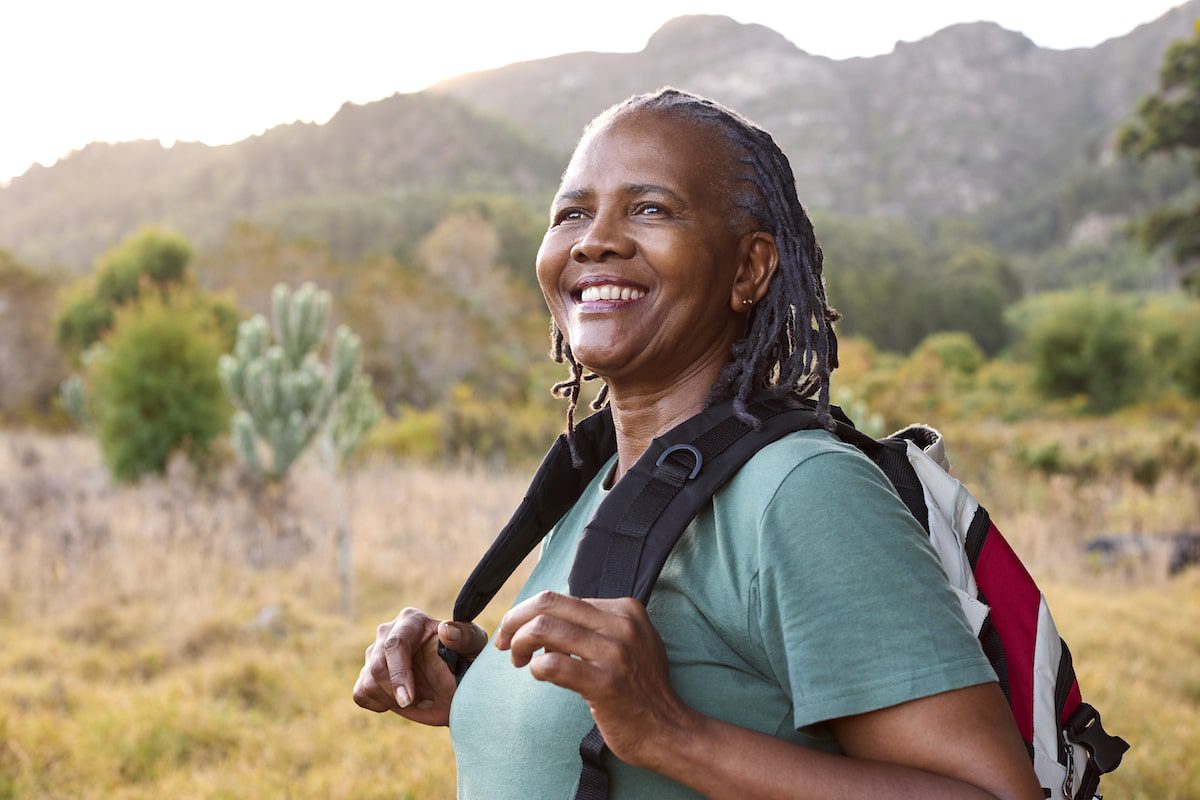Last updated on January 14th, 2025
Featured image: Plan your next adventure with these money-saving travel tips | Photo by Prostock-studio on Envato
Planning ahead saves time and money
by Claudia Laroye
When Calgary-based Leigh McAdam plans her hiking adventures in the Canadian Rockies or Norway’s Lofoten Islands, she invests time at the beginning of the process to ensure that cost savings can be found from the get-go.
“I love planning adventure trips,” she says. “It’s part of the fun of travel and doing it yourself can save you a lot of money.”
McAdam, a writer and experienced backcountry hiker, is currently planning a backpacking trip on British Columbia’s rugged North Coast Trail on Vancouver Island. After mapping her route, organizing boat shuttles and her daily food allotment and hiking plan, she figures she’ll spend about $750.
“I think it’s worth a day or two of my time to save that much money.”
10 Money-Saving Travel Tips
Whether you’re into DIY travel planning or prefer guided trips organized by professional tour operators, these money-saving tips will help you plan a successful adventure trip, with no credit card hangover upon your return home.
1. Put money away every month into a travel account
Whether it’s stuffed into a mason jar, or transferred to a secured, high-interest savings account, determine a regular monthly contribution and deposit it into your travel fund. The savings will grow separately from daily expenditures and accumulate over time.
Bonnie Hinschberger, Co-Founder, Broad Escapes – Tours for Women, advises that it’s important to set and plan a budget in advance of a trip. This includes often-overlooked expenses like visas and travel vaccinations.
“Consider budgeting for these things in the initial planning stages of your trip so you won’t have surprises as your trip approaches,” Hinschberger says.
In addition to entry fees, visas, vaccines and travel clinic visits, expenses can include adequate insurance protection, tipping suggestions and an appropriate budget for spending money while travelling.
2. Choose an inexpensive or emerging destination
There are destinations in the world that are just cheaper than others. Think Bolivia over Chile. Thailand over Turkey. Or Mexico over Hawaii. Your precious travel dollars will go farther in places where the price of accommodation, food and adventure activities cost less.
Diane Valenti, Founder of Llama Expeditions, encourages clients to consider less popular, and often less expensive, destinations in travel planning.
“Our trip to Bolivia is less than half the cost of our trip to Chile. (While) Bolivia is a much less developed destination, your money will go a lot further than it will in Chile.”
3. Plan and book early
Planning travel has been proven to boost happiness in people. The anticipation of future travel is motivating and exciting, even more so when you think that planning in advance can also save you money.
“Booking your flights and accommodations early can help you score better rates,” says Jennifer Haddow, owner of Wild Women Expeditions. “You’ll have more date, tour and accommodation options to choose from, and also more time to research your destination and budget for other expenses.”
Some tour operators offer early bird booking discounts for trips booked a year in advance, even on high-season trips in popular destinations. Subscribe to receive emails from your favourite tour operators to get first dibs on sales or those last-minute booking savings.
Sign up here for JourneyWoman’s HOT FLASH emails with last-minute trip discounts!
4. Join social media groups
You can also join social media groups, like JourneyWoman’s Solo Travel Wisdom group on Facebook, to connect to other travellers in the destinations you plan to visit. There is wisdom in the experience of others, and many adventure travellers are more than happy to share tips and advice on free activities, cheap and safe transportation options, and budget-friendly restaurants and attractions.
5. Make use of airline and accommodation loyalty programs
Membership does have its privileges. And they include cost-saving benefits with travel partners like airlines, hotels and car rental companies. If you can tie credit card expenses to accumulate points towards travel perks, big chunks of money can be saved and allocated elsewhere in the trip.
For airlines, pick a points and loyalty program that goes to a wide variety of destinations and with many partner airlines. A popular program in Canada is Aeroplan, where you can use points for flight redemptions, hotel stays and car rentals, as well as make point-boosting retail purchases from shops like Starbucks and Amazon.
6. Travel in the off-season
As summer travel heats up to the point of discomfort in many destinations, off season is the new high season. Traditionally, the non-peak travel times have been spring and fall seasons when tour, airline and accommodation prices have fallen.
But as climate change impacts people’s travel patterns, off season savings may be more challenging to find in the future. Still, it’s worth thinking about planning off season trips as a money-saving travel strategy.
“Tour operators will often lower the price of a trip in the off season if they offer the itinerary all year,” advises Llama Expeditions’ Valenti.
Recommended: Ostuni, Puglia’s ‘White City’, in the Off Season
7. Budget for travel insurance
Travel insurance is a necessity on an active adventure trip. Many tour operators won’t allow you to book or travel without it. Your health and well-being are an operator’s primary concern, and it should be yours too, so protect it.
Insurance policy costs may vary widely based on location, age, pre-existing health conditions, destination and planned activity level. Tap into group insurance plans with employers, college alumni groups or automobile associations if available to you.
Angela Clark, a retired physician and owner of Go Travel Company, advises mature travellers to never scrimp on travel insurance, and to always carefully check the policy inclusions and exclusions. “My general rule is that if you can’t afford the travel insurance, you can’t afford the trip…yet!”

Women bonding on an adventure trip in Iceland / Photo provided by Wild Women Expeditions
8. Take the slow travel path
If you’re retired and have more time than the average traveller to visit and stay in a destination, plan a slow travel trip. Rent a longer-term accommodation like a furnished apartment or room in a guest house. You’ll save money on one of the biggest travel expenditures and live like – and meet more of – the locals in the destination of your choice.
Mariellen Ward, founder of the custom tour company India for Beginners, has used this slow travel strategy for years in her adopted home.
“I found a fantastic apartment at a very affordable price in Rishikesh and stayed there four years,” she says. “I sometimes stay in yoga ashrams for many weeks at a time, or local guest houses.”
Staying local long-term offers budget travellers the advantage of “letting you get to know the local culture and people,” adds Ward.
9. Ask about the single supplement
The rise of 50+ solo women travellers has prompted adventure tour operators to find creative ways to manage the bane of the single supplement charge. It’s a challenging issue for both operators and travellers.
In 2022, 50+ solo female travellers comprised 37 percent of Wilderness Scotland’s clientele. The company has responded to this demand with curated women-only itineraries, including booking entire lodges so there are no extra charges or single supplements.
Check JourneyWoman’s Women’s Travel Directory for trips with no single supplement.
When planning your trip, email the tour operator to inquire about single supplement charges. If they can’t be waived, budget accordingly if you choose an individual room over sharing a room with another solo female traveller.
Read More: Riding Solo: Active Travel for Women Over 50
10. Beg and borrow gear from friends and family
Some adventure trips are more gear-forward than others. A hiking expedition to Everest base camp or even a small ship cruise in a remote location may require more gear than you have in your closet or basement. That doesn’t mean you shouldn’t consider such trips.
Wild Women Expeditions’ Haddow advises that you don’t need to break the bank for great gear.
“Lean on friends, family, or neighbours for items like binoculars, dry bags, or travel guides. Check out your local thrift shop. Find sites with second-hand gear categories on their websites, where you’ll find all the big brands at a fraction of the price.”
If you’re planning a trip well in advance, pay attention to seasonal outdoor gear sales if you really want to own a specific down jacket or brand of hiking boots. Just be sure to break them in ahead of time!
More Money-Saving Travel Tips
Five Ways to Save Money on Travel: Tips from the 2025 New York Travel and Adventure Show
Travel experts Pauline Frommer and Peter Greenberg share tips to save money on travel at the 2025 New York Travel and Adventure Show.
JourneyWoman Webinar: How to Save Money on Travel with Skyscanner
Join us on Tuesday, February 11 for a webinar with Skyscanner to bust open some myths about booking travel and ways to save money.
Holiday Travel Tips to Save Money on Flights
Five expert tips to help you save money on flights and get the most value for your dollar, from travel writer Scott Laird.








I appreciate these tips as I have thus far ruled out Adventure Travel as too expensive. These suggestions amke me reconsider!